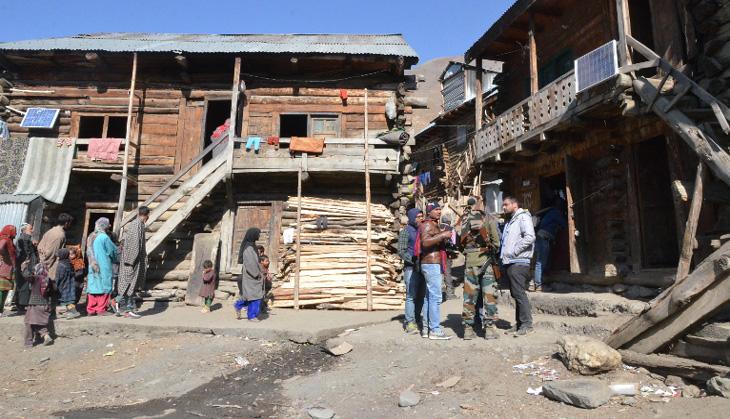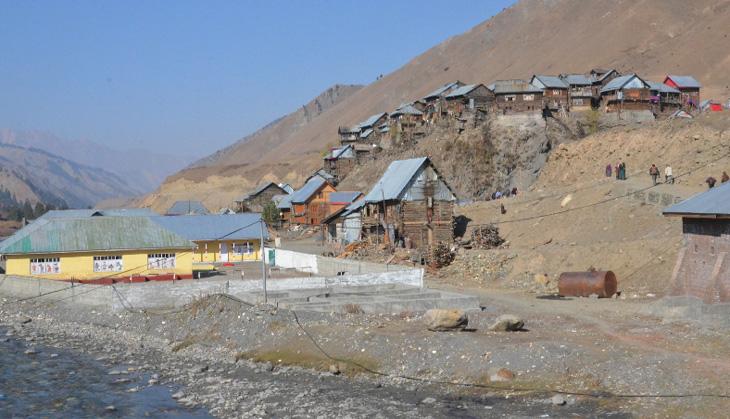Up in Kashmir's hills people seem to have found some great solutions to make lives easier

Life in the mountains is very tough. The rough terrain and extreme weather conditions test human endurance to the limits. But there are very few initiatives aimed at making it simpler because the population in these areas is sparse and scattered.
It was with the motive to understand the daily challenges faced by these people and how they tackle them with the help of traditional wisdom, knowledge and local innovations, that a team from Society for Research and Initiatives for Sustainable Technologies and Institutions (SRISTI), led by Professor Anil Kumar Gupta of Indian Institute of Management (IIM) Ahmedabad, recently undertook a journey to Kashmir.
The journey under the 'Shodhyatra' was undertaken in Gurez valley in Bandipora district by 40 persons with the help of students and local volunteers from Gurez and Tulel valleys in search of local creativity, innovation, and outstanding traditional knowledge.
The yatra covered the area between Chekwali which is the last village of Tulel Valley towards the Line of Control to Burnai village in Gurez valley.
The report brought out by SRISTI points out –
“During the walk, many traditional knowledge practices for agriculture, human and animal health were documented along with some creative ideas from school students and grassroot innovators. Many creative ideas of innovators and school children were recognised. The Shodhyatris also met such children who not only identified a problem but also wanted to implement their solutions. Never before, were so many problems faced by local groups so well identified by children and women along with possible solutions in some cases.”
A region without internet, mobile phone connections and practically neglected by markets and the state is endowed with abundant human ingenuity and creative spirit.
“Women work very hard carrying baskets full of 50 kg to 60 kg of firewood on their backs up on to the steep slopes. The protrusions on the baskets hurt their backs badly. They need new designs urgently. If we cannot remover their burden, can we make it bearable?” the report asks.
The area is cut off for three to four months in winter because of 20 feet or more snow and people depend on wood to keep them warm. One room heater (Bukhari) of a wooden house needs about 50 kg to 70 kg of wood daily to keep it warm. The combustion efficiency of Bukhari is quite low. There is a lot of work that needs to be done in the area, as most of the things are done by the people manually.
The report underlines that there is tremendous scope for adding value to the local ideas and local herbal knowledge besides bringing local products into the market. Emphasis needs to be laid on renewable energy sources by using solar and hydro turbines.
The journey revealed some very effective local innovations while throwing up many questions and issue that need to be addressed.
A few innovations which caught the eyes of the travelers were the herbal tablets made by school students to cure stomach aches, a device for adding better grip to shoes for walking in snow, extra wheels to be attached to baskets for carrying weight etc.
But more interesting were the queries from the locals. Some children wondered whether solar energy could be used for keeping the Bukhari or Kangri (a portable stove carried inside pherans and long coats) warm. Some women wanted devices that would help them carry babies while they worked while others wanted chapati makers.
The report says – “One of the most redeeming facts was almost total absence of malnutrition among children. Mothers breastfeed their children for two to three years. They grow vegetables in small gardens. The communities have high respect for elders.”


The visitors were able to list the problems being faced by women and children which the latter identified themselves.
These included :
– The need to redesign the Chapati warming circular wire mesh kept on smouldering wood or coke near the Chulha so that one does not have to hold circular hot wire mesh with bare hands. These need to be either mounted on tripods or a wooden handle can be attached to it.
– The people want advanced spinning wheels to spin yarn from locally available wool instead of the traditional wooden spindles that they have been using.
– The women want to have a device that can help them carry their infants in a horizontal position so that the mothers can keep their hands free and work.
– A winnower (manual or solar powered vertical fan to blow air) is needed to separate the chaff from the grain for peas and other crops.
– The farmers want some simple mechanism for breaking clay clods after they plough their land.
– The people want help to process their fruit and vegetable produce that can enhance their income.
“One of the interesting aspects that we came across was that the atmosphere of militancy has not deterred the people from identifying their problems and working on solutions. Their focus is on their necessities and requirements. They know how small innovations can make a difference to their lives,” says Tejal Dabhi who was one of the Shodhyatris in the journey.
Professor Gupta is also the founder of Honey Bee Network which through SRISTI and National Innovation Foundation proposes to stay engaged with local communities in this region.
Whatever knowledge and practices that have been pooled in the Honey Bee database through the Shodhyatras over the years are shared with the villagers during these journeys in the form of booklets in regional languages.
First published: 15 November 2017, 18:52 IST

